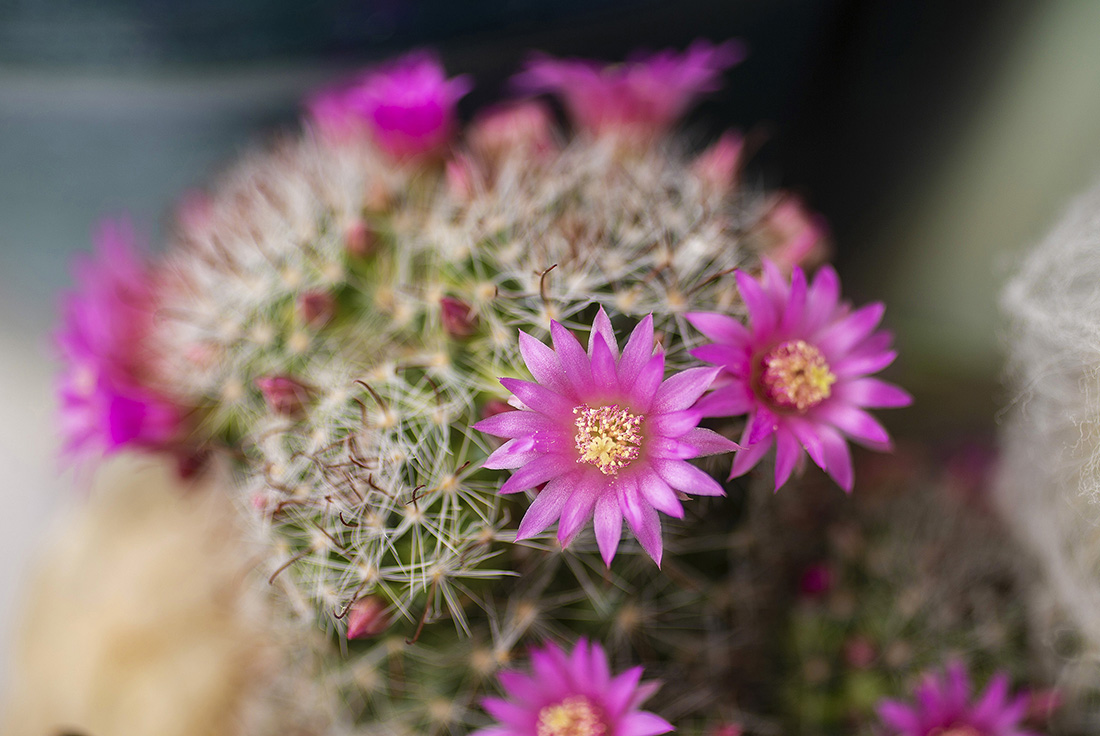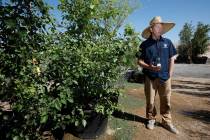Searing summer heat. Minuscule annual rainfall. Nearly nonexistent humidity. Arid soil that’s more like cement than dirt in many places. No wonder that even the most experienced local gardeners compare Southern Nevada to Mars when it comes to inhospitable places for plants.
“When the NASA rover beamed back the first images of Mars’ surface, a friend of mine joked that it looked like her backyard,” said M.L. Robinson, who’s lived in the Las Vegas valley for 20 years.

To call Robinson a gardener is a vast understatement. Gardening guru would be more accurate. As an environmental horticulturist with the University of Nevada Cooperative Extension, he’s dedicated decades to teaching others how to overcome the challenges of gardening in the Mojave Desert.
The simplest solution: Grow your plants in containers.
“Container gardening gives people a lot of control over the desert conditions that otherwise can quickly kill many flowering annuals, perennials and vegetables,” Robinson said.
Indeed, containers have become vessels of creativity for gardeners across Southern Nevada. Everything from petunias and pansies to artichokes and dwarf lemon trees can flourish in pots. Containers also can elevate the sculptural beauty of desert natives such as cacti and succulents, grown as singular specimens for visual impact, or clustered in dish gardens to showcase their complementary colors, textures and blooms.
Other bonuses of container gardens: You can grow them almost anywhere, even in limited spaces such as on balconies and small patios. Use them to enliven pool decks and visually break up other boring swaths of hardscape around your home. If a plant fails to thrive in one spot, you can easily move it to another location where the light and microclimate might be more nurturing.
Caveats to container cultivation
And don’t overlook the design appeal that containers themselves can lend to your landscape. Garden pots come in all shapes and sizes, made from an array of materials. Select what suits your fancy, from gleaming glazed pottery, for instance, to rustic wooden whiskey barrels.
“Gardening in pots is a fun way for people to use their imagination,” Robinson said. “And it’s a lot cheaper than therapy.”
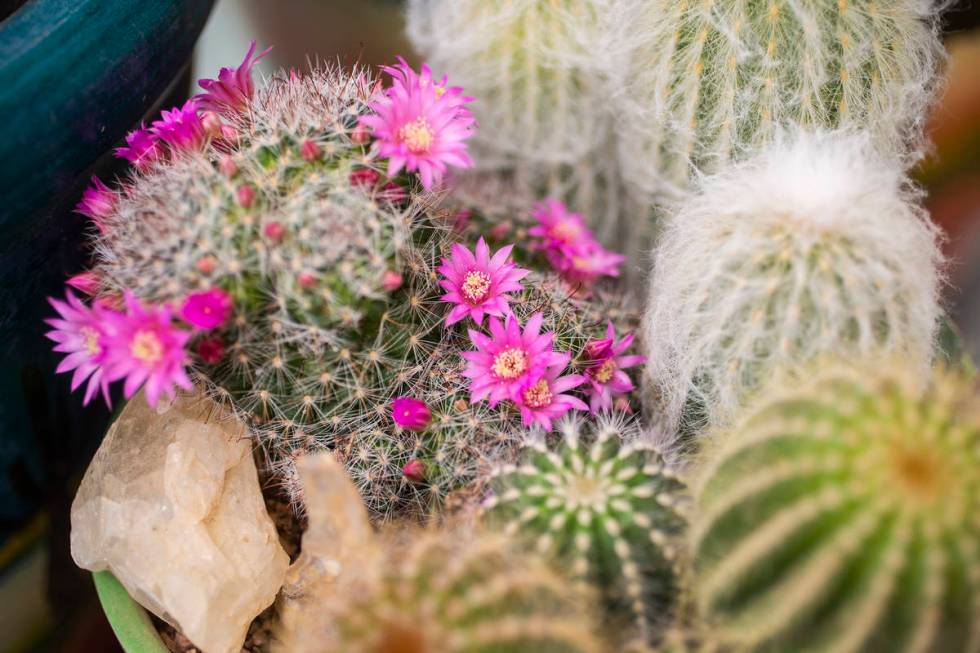
There are caveats to container cultivation. You’ll need the right soil, which varies depending on what you’re growing. Proper watering is a must; some plants are naturally more thirsty than others, especially in near-zero humidity. Then there’s the sun and the heat — too much can doom plants, especially non- native species.
While there’s a lot to learn about growing plants in pots, Paul Noe — aka Dr. Q, the resident horticultural expert for Star Nursery — advises would-be green thumbs to simply follow their instincts when starting out.
“Begin with something that catches your eye,” he said. “It may be a certain plant or an attractive pot. What’s important is that you enjoy the experience of container gardening.”
For the best long-term success, follow these fundamental tips from some of Southern Nevada’s most experienced gardeners.
Select the right soil
“Never use native soil,” Robinson says. Our hard, rocky soil doesn’t contain enough nutrients to sustain most plants. Plus, the ground is so compacted in many places that it hardly absorbs water.
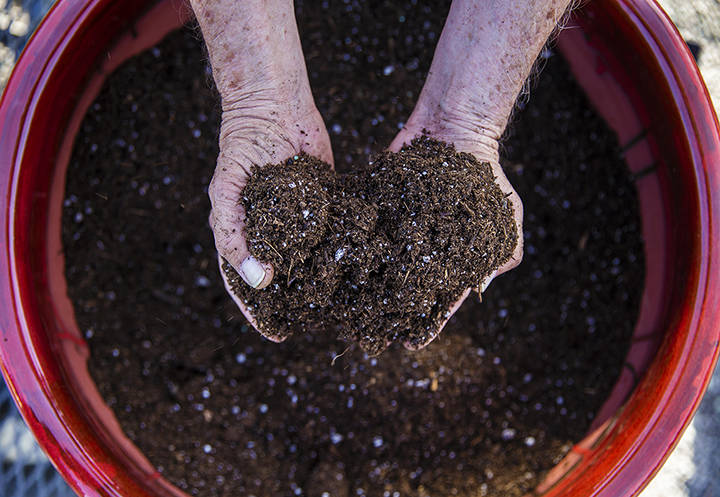
The right soil recipe varies, depending on what you want to plant.
For ornamentals like flowering annuals and perennials, use potting soil mixes sold at your local nursery or big-box gardening department. They contain the organic nutrients plants need and their fluffy texture tends to retain water.
Vegetables, herbs and fruit trees need even more organic matter to thrive. Look for commercial soil mixes labeled specifically for fruits and vegetables. Or create your own mix by combining potting soil with compost, manure or peat.
Cacti and succulents are naturally accustomed to more desert-like soils. Local nurseries sell specific formulas for cacti and succulents, which generally contain equal parts potting soil and sand, with some pebbles thrown in for proper drainage.
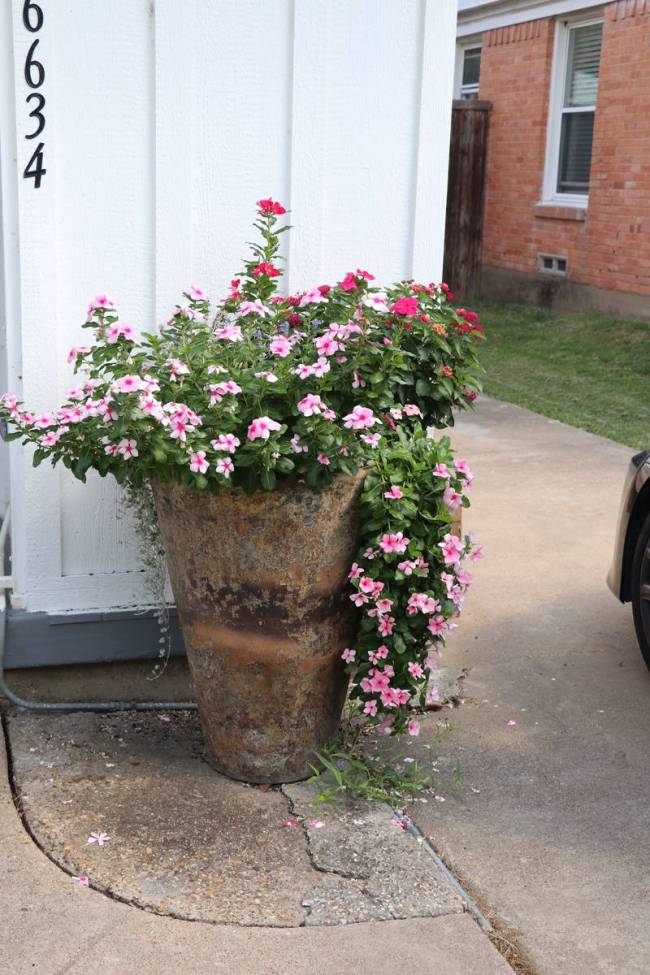
Choose the right pot
Any container that holds water and allows drainage is a potential home for plants. Terra cotta pots, glazed ceramics, and faux-stone urns are obvious and widely available choices. Less obvious but equally effective: old buckets, metal wash tubs and birdbaths. Robinson recommends horse-watering troughs for growing vegetables as an alternative to building raised beds.
Whatever vessel you choose, make sure it has holes in the bottom to release excess water. Root rot is a common killer of container plants.
When it comes to pot size, bigger generally is better.
“Plants need room to grow and spread out their roots,” said Karin Bell, general manager at Cactus Joe’s Blue Diamond Nursery. Large pots don’t dry out as quickly as smaller ones, reducing watering chores.
Transplanting is another chore you can avoid by using larger pots. Given adequate space, cacti and succulents can comfortably grow for years in containers.
Know when to water
Too much or too little water is the most common reason that container plants fail. The key to success is knowing the specific watering needs of those you choose.
Flowering annuals and brightly colored perennials, such as geraniums and coleus, can be heavy drinkers. A one-inch layer of bark or mulch can help these plants retain water.
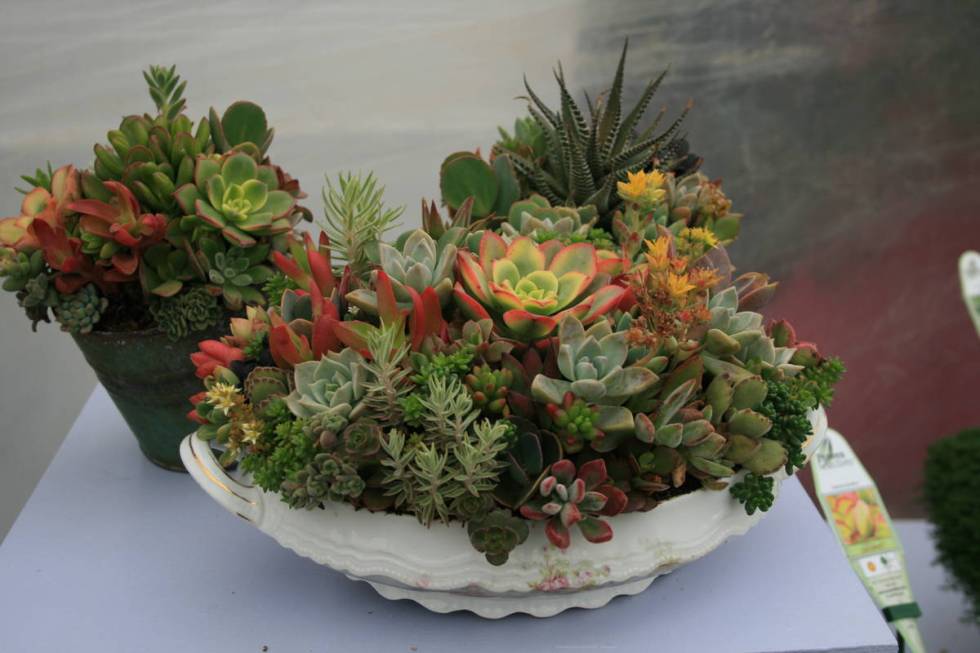
Vegetables and fruit-bearing trees require soil that’s consistently moist but not soggy. Given our seasonal extremes, that means you may need to water these plants twice a day during the summer, while in winter they may need watering just twice a week.
Contrast those with desert natives like aloe and agave, which thrive in dry conditions. Don’t water cacti and succulents in winter, when they are dormant. In summer, make sure desert natives dry out between waterings.
The easiest tool to determine if your container needs water is a moisture meter. Insert this inexpensive probe ($7 to $15 at most nurseries) into your container, reaching about three-quarters down. The read-out will tell you whether the soil is wet, dry or in between.



